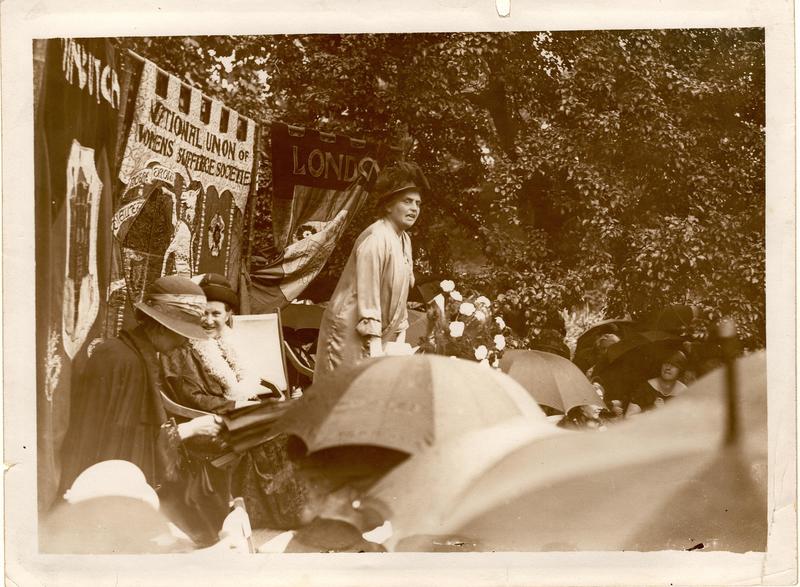Feminism and the Women's Colleges
Dr Laura Schwartz

Education was one of the earliest and most enduring demands of the Victorian women’s movement; the first hurdle in their struggle to participate on an equal basis with men as economically and politically active citizens. Without adequate education, feminists argued, women would not be able to find financially and intellectually rewarding work. Nor would they be able to make responsible and reasoned decisions about how the nation ought to be governed. Contrary to the prevailing ‘domestic ideology’, which maintained that woman’s place was in the home, feminists pointed out that many women were not able to rely upon a husband or father to support them financially. Without adequate training or employment, middle-class women were forced into low-paid positions of genteel drudgery, most commonly as teachers or governesses. 1 It was these women for whom the first women’s colleges were intended, in the hope that as well is generating better qualified teachers for girls’ secondary schools, women might be educated to enter a variety of professions. Emily Davies’ influential book The Higher Education of Women (1866) argued that women should be allowed to work as medical doctors, as managers of hospitals, workhouses, prisons and charitable institutions, and to go into farming or business.2 In 1869 she set about realising this aspiration and founded Girton in Cambridge, the first Oxbridge college for women.
While all feminists enthusiastically advocated women’s right to attend university, not all the founders of the new women’s colleges identified with a wider women’s rights agenda. To advocate for women’s higher education was not necessarily to advocate for their full equality, either within the University system or society at large. As the century wore on, the cautious manner with which educationalists pursued their aims (‘degrees by degrees’ according to Annie Rogers who helped to found St Hugh’s and the Society for Oxford Home-Students) was often at odds with the increasingly militant tone of British feminism.3 Oxford women have been characterised as more conservative than their Cambridge counterparts.4 In 1894 Elizabeth Wordsworth, First Principal of Lady Margaret Hall and founder of St Hugh’s, criticised ‘the women who join most loudly in the cry for women's rights’ for trying to emulate men, and argued that the new colleges had a responsibility to ‘cultivate womanliness’.5 Chaperone rules, which carefully circumscribed the dress, movements and social interactions of all Oxford women students well into the 1930s, were driven by this desire to avoid associating women’s higher education with the flouting of traditional feminine norms.6
Such pronouncements were not simply driven by an expedient wish to appear respectable, but also a more profound belief in sexual difference. Dorothea Beale, who founded St Hilda’s, presented a paper to the 1865 Social Science Congress on the education of girls which began by asserting:
‘I desire to institute no comparison between the mental abilities of boys and girls, but simply to say what means be the right means of training, so that they [women] may best perform that subordinate part in the world, to which I believe they have been called’.7
Whereas Girton College, Cambridge insisted that its students follow an identical curriculum to that of male students as the only route to full equality, Lady Margaret Hall, St Hugh’s, St Hilda’s and the Society for Oxford Home-Students (later St Anne’s) followed Newnham and did not compel their students to read for degrees or sit examinations. This was not only due to conservatism. Many were critical of the old-fashioned and narrow curriculum that the men studied and did not wish to impose it upon women. But it did lead to a cautious approach to demands for women be recognised as full and equal members of the University. Bertha Johnson, first Principal of the Society for Oxford Home-Students, went so far as to oppose a bid in 1895-6 to secure the admission of women to the Oxford BA degree, and in 1897 she supported a proposal by opponents of degrees for women for a separate degree-awarding university for women.8
Many of the early Oxford women pioneers were also ambivalent about the question of women’s suffrage. Mary (Mrs Humphry) Ward, one of the founders of Somerville, recalled how ‘my friends and I were all on fire for women’s education, including women’s medical education… But hardly any of us were at all on fire for women’s suffrage, wherein the Oxford educational movement differed greatly from the Cambridge movement.9 Ward was perhaps the most notorious of the Oxford anti-suffragists, heading up the Women's Anti-Suffrage Association (est.1908).10 Elizabeth Wordsworth also initially opposed votes for women, and though by 1913 she had come round to accept that they would inevitably be granted, she remained appalled by the actions of the militants.11 Annie Rogers, on the other hand was an active member of the Church League for Women’s Suffrage, while St Hugh’s second principal Eleanor Jourdain advertised London suffrage marches on the college notice board.12 St Hugh’s would have struggled to acquire its permanent buildings without the generous financial support of its most important patron, Clara Mordan, who was a supporter of the militant Women’s Social and Political Union. Thus the Anglican colleges’ emphasis upon God-given sexual difference, and valorisation of Christian ‘womanliness’ were not wholly antithetical to an expansion of women’s social and political role. Rather, they ought to be located within a tradition of Church of England feminism, which often subverted apparently conservative teachings to push the boundaries of acceptable feminine conduct and challenge opponents within their own church.13 Elizabeth Wordsworth’s insistence upon divinely instituted sexual difference led her to argue against those who claimed that education would create unwomanly women. ‘[P]ut women into whatever circumstances you will,’ she assured her, and ‘they (happily for the world) will always remain women’.14
By the early 20th century, an education at one of the Oxford women’s colleges inevitably led to at least an encounter with the suffrage movement. The Oxford Women’s Suffrage Society, a branch of the National Union of Women’s Suffrage Societies (NUWSS), was established in 1904. Somerville and Lady Margaret Hall set up their own suffrage societies in 1907, St Hugh’s in 1910.15 In 1913, Oxford women welcomed hundreds of women participating in the Great Pilgrimage, organised by the NUWSS to spread the message of women’s enfranchisement to every corner of Britain. Somerville students raised money for ‘suffrage self-denial week’ by opening a ‘pop-up’ milliner’s shop, charging threepence for sprucing fellow students’ summer hats, and offering shampoos and ‘lessons in coiffure’.16 Alongside such light-hearted activities, the fate of another Oxford student, Emily Wilding Davison, reminds us that the struggle for the vote remained controversial and often dangerous. Davison, who had read English at St Hugh’s in 1895 and achieved a first-class honours, was killed at the Epsom Derby in 1913 when she tried to hang a suffragette banner on the King’s horse.17
After the First World War, some of the more rigid Victorian codes of femininity began to give way. In 1919 St Hugh’s student Ina Brooksbank counted 3 women students who rode motorcycles around Oxford. One wore ‘leggings, wide skirts, [a] small hat and 1 yard of veil floating behind’, another ‘patronises a trench coat and flappy hat which she holds on with one’.18 Margery Fry’s Principalship at Somerville from 1925 to 1930 was a marked contrast to that of her more staid predecessors. Concerned by students’ ignorance about sex, she once invited Dr Winifred Collis to give two talks at the college on health and physiology.19 Liberated from the emotional and domestic responsibilities of home life, studying at Oxford at the very least put in place the necessary conditions to develop a more independent identity and pursue the personal, economic and political freedoms that ‘first wave’ feminism had made possible. But this was not the case for all for all women who lived and worked in the women’s colleges. For students and tutors to enjoy a life of the mind unfettered by domestic duties, the colleges also employed a large staff of cooks and cleaners whose work remained traditionally feminine – that is, low status and low paid. Elementary, secondary and tertiary education in the 19th century were categories structured by class rather than age. The movement for women’s higher education was unquestioningly directed towards middle-class women, and as was also the case for its feminist achievements.20
[1] Josephine Butler, The Education and Employment of Women (Liverpool: T. Brakell, 1868); Elizabeth Wolstenholme, 'The Education of Girls: Its Present and its Future', in Josephine Butler (ed.), Woman's Work and Woman's Culture (London: Macmillan & Co., 1869), 290-330.
[2] Emily Davies, The Higher Education of Women (London: The Hambledon Press, 1988), p.38,44.
[3] Annie Rogers, Degrees by Degrees: The Story of the Admission of Oxford Women Students to Membership of the University (Oxford: Oxford University Press, 1938).
[4] Janet Howarth, '“In Oxford but… not of Oxford": The Women's Colleges', in M.G. Brock & M.G. Curthoys (eds.), The History of the University of Oxford (2001) vol.vii, Part 2, 237-207.
[5] Elizabeth Wordsworth, First Principles in Women's Education (Oxford: James Parker & Co., 1894), p.8, 14-15.
[6] Laura Schwartz, A Serious Endeavour: Gender, Education and Community at St. Hugh’s, 1886-2011 (London: Profile Books, 2011), chapter 2.
[7] Dorothea Beale, On the Education of Girls. A paper read at the Social Science Congress, October, 1865, and reprinted from the Transactions (London: Bell & Daldy, 1866).
[8] Janet Howarth, ‘Johnson [née Todd], Bertha Jane (1846–1927)’, Oxford Dictionary of National Biography (Oxford: online edition, 2004).
[9] Quoted in Howarth, '"In Oxford but…not of Oxford"', pp.244-245.
[10] John Sutherland, ‘Ward [née Arnold], Mary Augusta [known as Mrs Humphry Ward] (1851–1920), Oxford Dictionary of National Biography (Oxford: online edition, 2004).
[11] Julia Bush, Women against the Vote: Female Anti-Suffragism in Britain (Oxford: Oxford University Press, 2007, p.41.
[12] Schwartz, A Serious Endeavour, pp.39-40.
[13] Schwartz, A Serious Endeavour, chapter 1.
[14] Elizabeth Wordsworth, ‘Isaiah I XII’ (1907-08), Sermon manuscripts, Oxford: St Hugh's College Archive, XIII.3.
[15] Howarth, '"In Oxford but…not of Oxford"', p. 301-305 stop
[16] Jane Robinson, Hearts and Minds: the Untold Story of the Great Pilgrimage and How Women Won the Vote (London: Penguin Random House, 2018), p.102.
[17] Vera Di Campli San Vito, 'Davison, Emily Wilding (1872–1913)', Oxford Dictionary of National Biography (Oxford: online edition, 2004); Robinson, Hearts and Minds, p.136.
[18] Ina Brooksbank to family (23 Nov 1919), Brooksbank correspondence, Oxford: St Hugh's College Archive, X.36.
[19] Pauline Adams, Somerville for Women: an Oxford College, 1879-1993 (Oxford: Oxford University Press, 1996), p.167.
[20] Gillian Sutherland, 'The Movement for the Higher Education of Women: Its Social and Intellectual Context in England, c.1840-80', in P.J. Waller (ed.), Politics and Social change in Modern Britain. Essays Presented to A.F. Thompson (Sussex: Harvester Press, 1987), 91-116, p.94.





